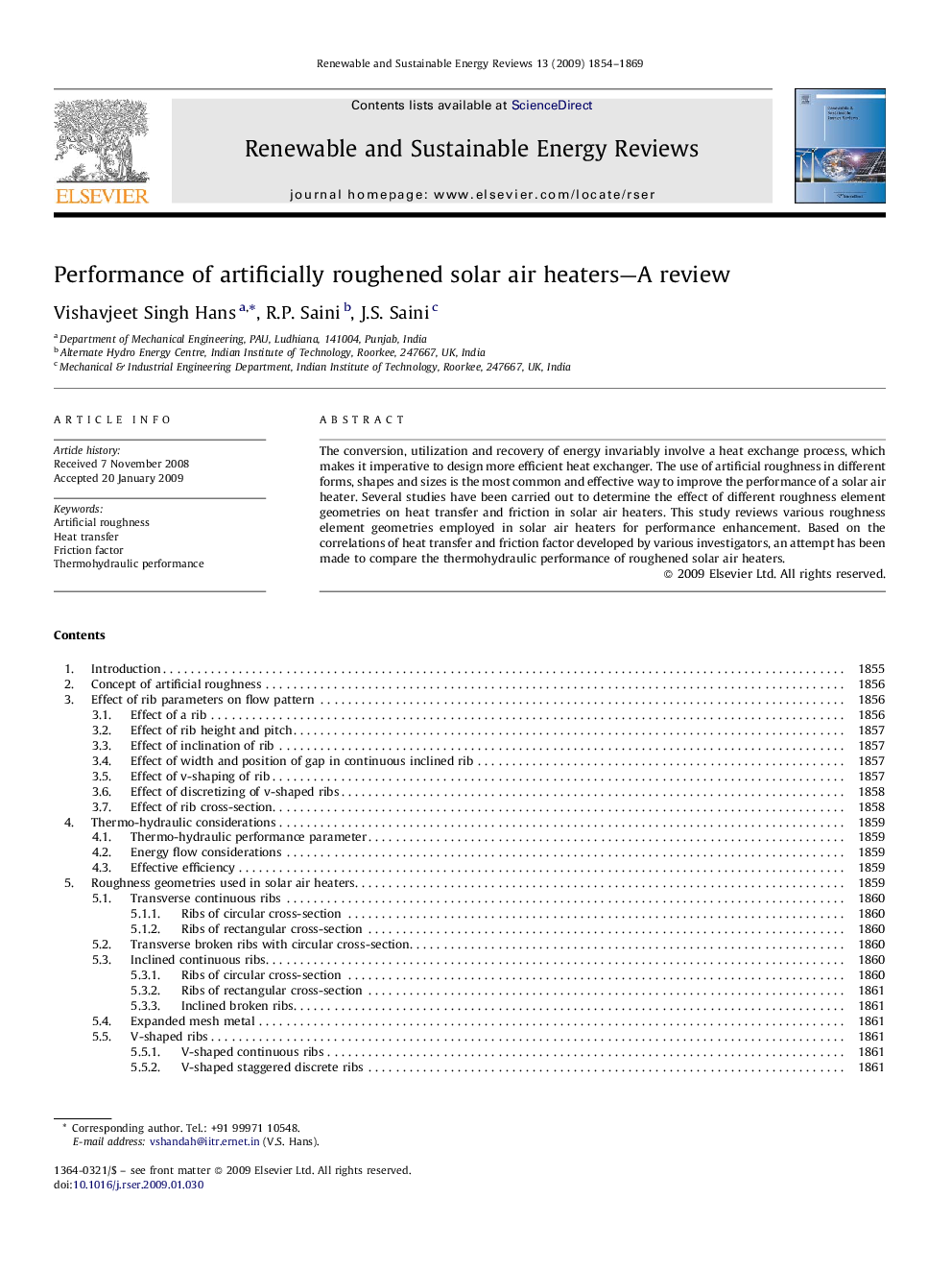| Article ID | Journal | Published Year | Pages | File Type |
|---|---|---|---|---|
| 1751994 | Renewable and Sustainable Energy Reviews | 2009 | 16 Pages |
The conversion, utilization and recovery of energy invariably involve a heat exchange process, which makes it imperative to design more efficient heat exchanger. The use of artificial roughness in different forms, shapes and sizes is the most common and effective way to improve the performance of a solar air heater. Several studies have been carried out to determine the effect of different roughness element geometries on heat transfer and friction in solar air heaters. This study reviews various roughness element geometries employed in solar air heaters for performance enhancement. Based on the correlations of heat transfer and friction factor developed by various investigators, an attempt has been made to compare the thermohydraulic performance of roughened solar air heaters.
